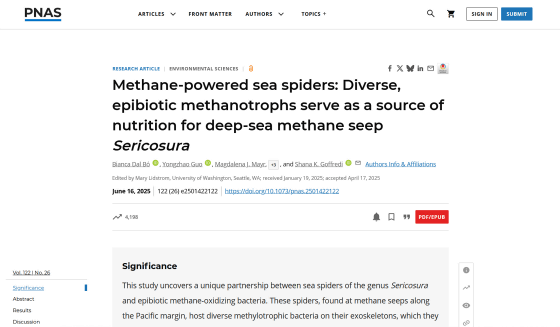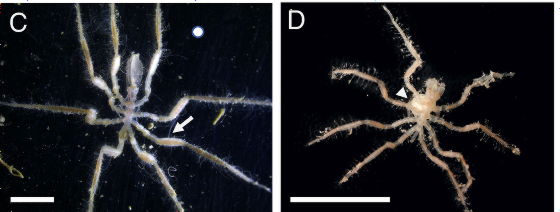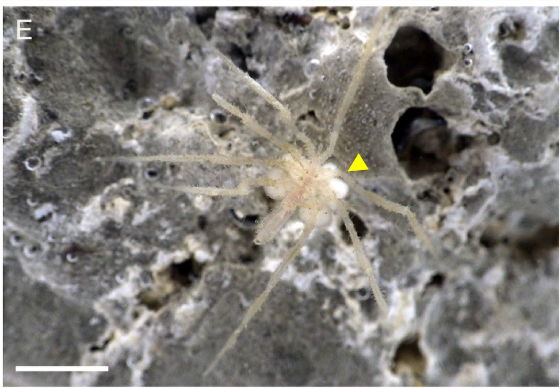A new species of sea spider has been discovered that feeds on bacteria that use deep-sea methane as a nutrient source

Three new species of
Methane-powered sea spiders: Diverse, epibiotic methanotrophs serve as a source of nutrition for deep-sea methane seek Sericosura | PNAS
https://www.pnas.org/doi/full/10.1073/pnas.2501422122

New Discovery of Deep Sea 'Spiders' Is Unlike Anything We've Seen Before : ScienceAlert
https://www.sciencealert.com/new-discovery-of-deep-sea-spiders-is-unlike-anything-weve-seen-before
First methane-powered sea spiders found crawling on the ocean floor | CNN
https://edition.cnn.com/2025/06/17/science/spiders-deep-sea-methane-new-species
On land, there is a food chain based on photosynthesis, such as with plants, but creatures living in the deep sea, where sunlight does not reach, must use energy sources other than light. For this reason, some bacteria living in the deep sea use compounds such as methane and hydrogen sulfide as a source of nutrition.
A research team from Occidental College in the United States conducted remote surveys of three methane seeps along the eastern Pacific coast from California to Alaska from 2021 to 2023. The survey led to the collection of three new species of sea spiders on the seafloor within 25 meters of the methane seeps.
The video below shows the Del Mar seep off the coast of California, one of the methane seeps where sea spiders were collected. Even though it is over 1000m deep, it is home to a variety of organisms, including tube worms and fish.
Inside the Del Mar Seep - YouTube
By studying these three species of sea spiders, all of which are classified in the genus Sericosula , the researchers found that their exoskeletons are densely populated with methylotrophic bacteria , which convert methane and methanol into carbon and energy.
Based on these results, the research team hypothesized that 'the sea spiders may be eating the bacteria living on their exoskeletons as food,' and conducted further experiments in an environment that mimicked the ocean floor. In the experiment, they labeled methane and carbon dioxide with different carbon isotopes, exposed the sea spiders to these gases, and tracked how each isotope moved.
Isotopic analysis showed that bacteria living on the sea spiders produce carbon from methane or methanol, and that these bacteria are incorporated into the spiders' digestive tissues, suggesting that the spiders feed on the bacteria living on their exoskeletons.
In general, many sea spiders have something in common with their terrestrial relatives, using large tubular fangs to capture prey such as jellyfish, immobilize them, and suck out their body fluids. However, when the sea spider discovered this time was examined in the laboratory, it was found that it does not have an organ for capturing prey. 'Just like eating eggs for breakfast, sea spiders eat the microorganisms that crawl on their surface as a source of nutrition,' said Shanna Goffredi , co-author of the paper and professor of biology at Occidental College.
The photo below shows the female (left) and male (right) of the sea spiders surveyed this time. The three species of sea spiders are only 1 cm long, so it is likely that they cannot move very far.

Professor
The bacteria that live on the spider's exoskeleton may also be passed down through generations: the male spiders observed in this study carried egg sacs containing eggs for up to 20 days, and when these eggs hatched, the bacteria living on the parent spider's body would attach to the baby spiders.
In the photo below, the yellow arrow indicates the eggs that the male is holding.

'The deep sea may feel so far away, but all living things are interconnected. Even though they may be tiny, these creatures have a huge impact on the environment,' Goffredi said.